With its southeast corner a mere 18 metres from the main railway viaduct connecting London Bridge station to Blackfriars, Cannon Street and Charing Cross stations, one has to concede that Southwark Cathedral is smack dab in the middle of the bustling activity that comprises London’s South Bank.
But St. Mary Overie (over the river), as the church that grew to be Southwark Cathedral was originally known, was always in the thick of it, standing at the oldest crossing point of the River Thames, which for many centuries was the only entrance to the City of London across the river.
Though there is some sense that a nunnery or monastery existed on the site as early as 700 AD, in 1106 St. Mary’s Overie was officially ‘re-founded’ as a priory by two Norman knights of the order of St. Augustine of Hippo, whose main vocation is one of pastoral care. It was easy to imagine myself back in the 13th century as I strolled the herb garden along the east end of the church.
The original Canons of St. Mary’s would have welcomed pilgrims on their way to Canterbury and served the poor. They also created a hospital alongside the church, which is a direct predecessor of today’s St. Thomas’s Hospital, originally named in honour of St. Thomas a Becket who was slain in Canterbury Cathedral in 1170.
The church was severely damaged by the Great Fire of 1212 and was rebuilt between 1220 and 1420, making it the first Gothic church in London. Along came the Dissolution of the Monasteries in 1539, and the church became the property of King Henry VIII. He pensioned off the last six Augustinian Canons and rented the building back to the congregation. Henry always had an eye to the Royal coffers.
St. Mary’s Overie was re-named St Saviour’s, but it took a while for the new name to be accepted into common usage. Old habits die hard.
The unsatisfactory rental arrangement went on for some time until a group of merchants from the congregation, known as ‘the Bargainers’ got together in 1611 and purchased the church from the then-current monarch, King James I for £800.
St. Saviour’s became the stage for many of those involved in the theatres of Shakespeare’s day. Actors, dramatists and theatre workers such as Edmond Shakespeare (William’s brother), John Fletcher and Philip Henslowe were all buried in the building.
The Bard himself is commemorated with a large stained glass window by Christopher Webb (1866 -1966) which is set above a marble niche containing an alabaster statue of William Shakespeare, “quill” (rosemary sprig) in hand.
The window depicts many of the characters from Shakespeare’s plays. From left to right: the left panel is the comedies with characters such as Feste and Bottom…
…the centre panel features the Tempest and the right shows the tragedies, including Hamlet and Lady Macbeth.
John Harvard, of Harvard University fame, is commemorated in The Harvard Chapel. He was baptised at St. Saviour’s in 1607. His father, Robert Harvard, was a prominent businessman and a warden of St Saviour’s which gave him considerable influence in his community.
The plague of 1625 killed many family members including his father. Two years later, John entered Emmanuel College in Cambridge, earned a BA and MA and married a minister’s daughter.
He also learned of John Winthrop’s plans to establish a Puritan settlement in New England, so after the death of both his mother and elder brother, John and his wife Ann left for Massachusetts in 1637. Unfortunately, his time in America was not long; he died of consumption in 1638 and left half his estate and his library of books to the proposed new college, now known as Harvard University. The Harvard Chapel in the Cathedral commemorates this ‘godly gentleman and lover of learning’.
The very striking stained glass window is by John LaFarge, who was known for his innovation in stained-glass design. He and Louis Tiffany shared the technique of using opalescent glass, which seems to provide incredible richness and depth to the colour of the glass. The upper three sections of the window include the arms of Emmanuel College, Cambridge, which John Harvard attended, Harvard University and the Stuart Royal Arms. The lower panels show the Baptism of Christ by John the Baptist. Originally installed in 1907, the window was damaged in 1941 in a WW2 bombing raid, and reconstructed in 1948.
The choir was practising while I made my way around the Cathedral. I’ve been lucky like that on a number of Cathedral-crawls; the music gives such a lift to the visit, reaching out to envelop with a sense of purpose and community.
The basic outlines of the now quite ornate altar screen were added in 1520, though most of the details, including the figures, were likely added later.
Statues were forbidden during the Reformation, and the “basic” screen was completed within a decade of it.
One of the tombs between the sacristy and the side aisles.
I can’t help imagining how difficult it was to launder, starch and then “gofer” those neck ruffs. Yes, irreverent, but don’t you think so?
I was taken by how light and airy the nave felt and later learned that it has been rebuilt at least three times.
By 1831 the nave roof had become quite unsafe, so was removed, leaving the nave open to the elements (one has to wonder what it was like attending services during that interlude). By 1839 it was demolished to within seven feet of the ground.
New walls went up but were higher than the adjoining chapels. Very badly received and roundly criticized, down they came once more. Building began anew between 1890 and 1897, this time designed to recreate the 13th-century model as accurately as possible, and to preserve the few surviving mediaeval fragments. This final effort seemed to do the trick, and in 1905 the collegiate parish church of St Saviour was designated as a cathedral. Here is the current roof above the nave.
and this is the current roof above the altar; happily, it looks pretty solid, too.
I found this model of the church/cathedral in a side aisle and later wondered which iteration it was meant to depict. Can’t you just imagine the squabbling during all the (literal) ups and downs of construction?
Most of the stained glass is fairly modern – 19th and even 20th century.
This window is in the west end of the nave and depicts creation by glass artist Henry Holiday.
I am guessing that the lady to the right of Christ in the window below is Saint Veronica, who wiped Jesus’ face on the way to the cross. Any guesses who the sad-looking one at the bottom is? Mary?
Here is a rose window above one of the transepts.
Lastly, the organ. I’m always stunned at how huge they are!
Today, Southwark Cathedral is still in the thick of it, with modern buildings like the Shard (named for the pointy, unfinished bits at the top of the conical shaped building) springing up around it.
If you’re ever visiting London, Southwark is well worth a stop in. It may not be as magnificent as the “big guns”, St. Paul’s and Westminster Abbey, but it has a warm, down to earth friendliness that is very appealing.
I’m sharing this post with Between Naps on the Porch.





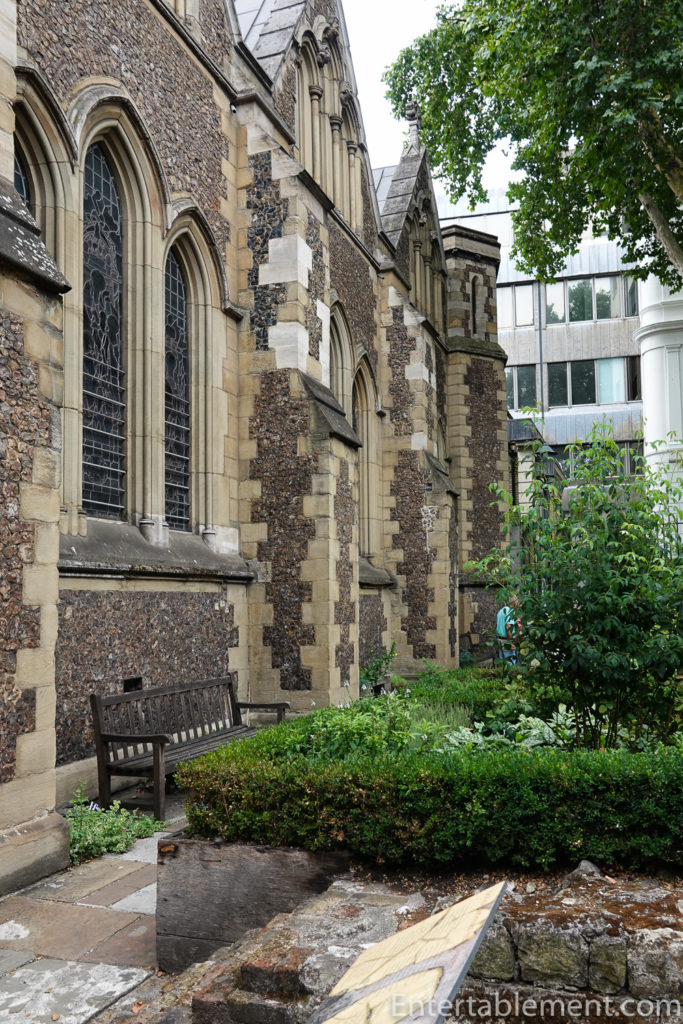
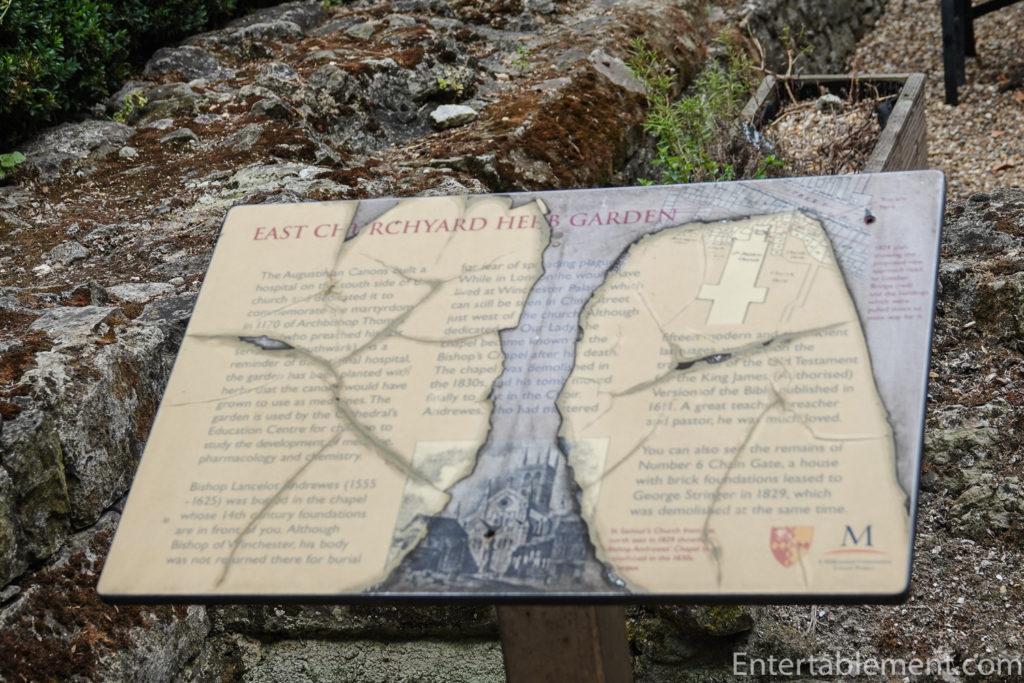




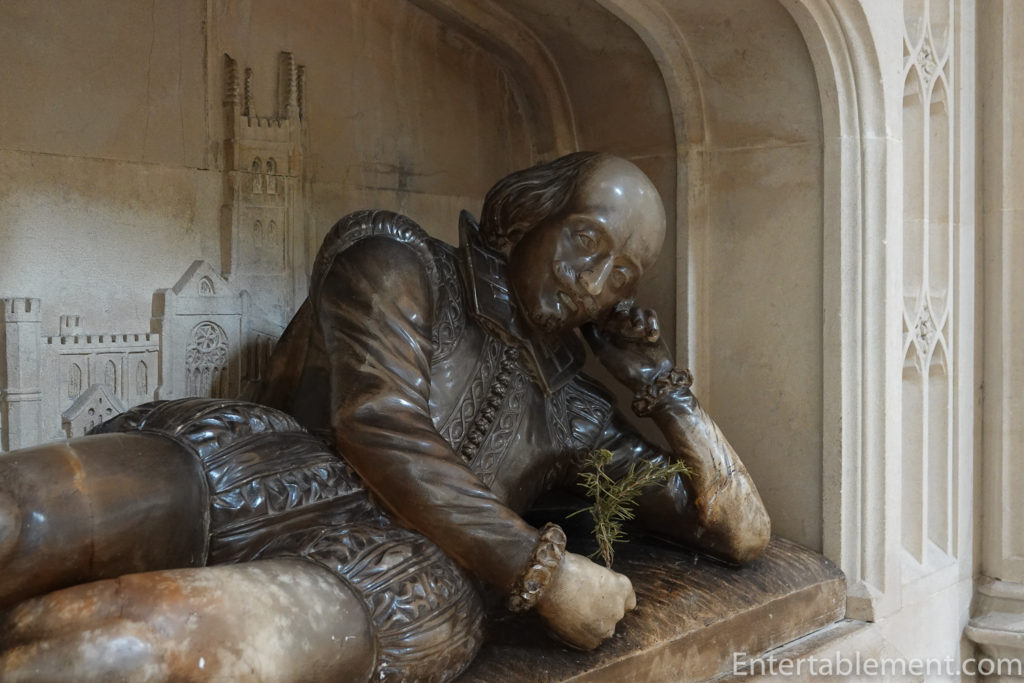
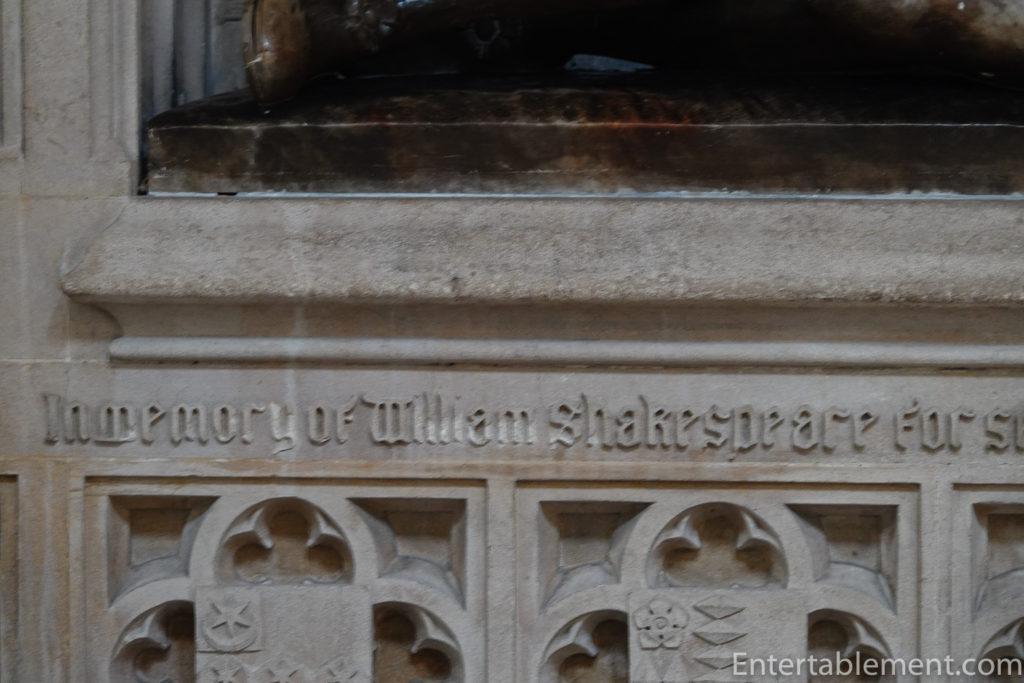
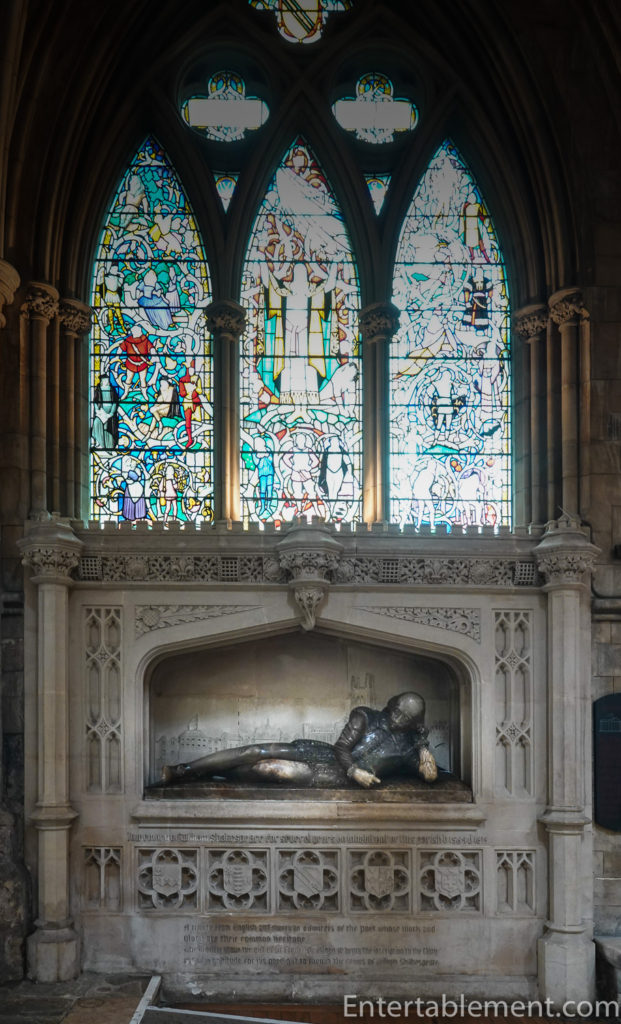
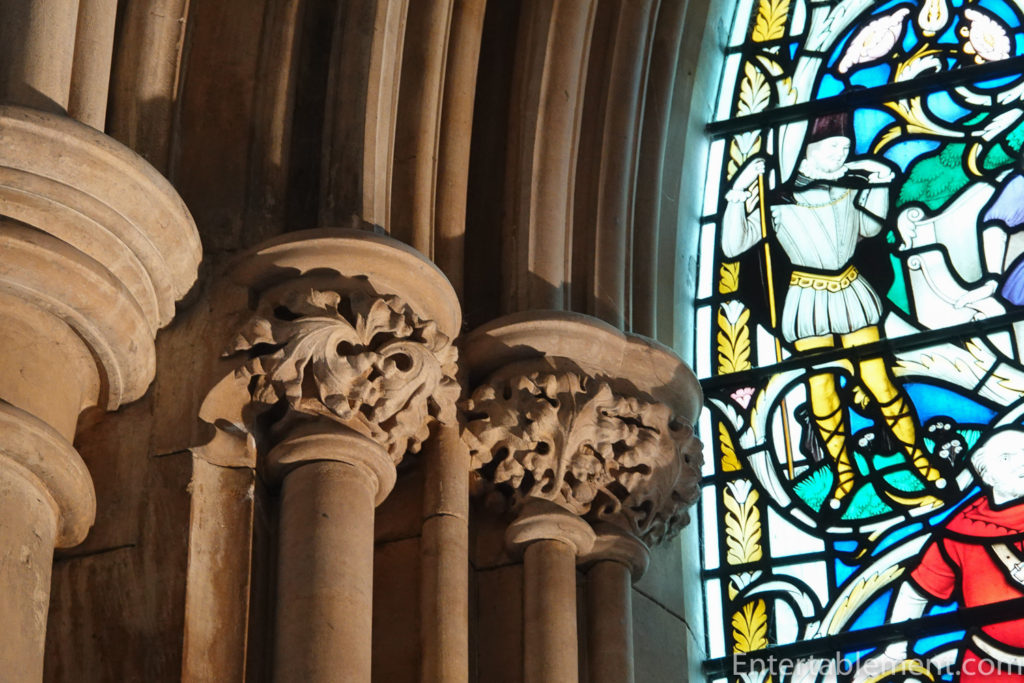
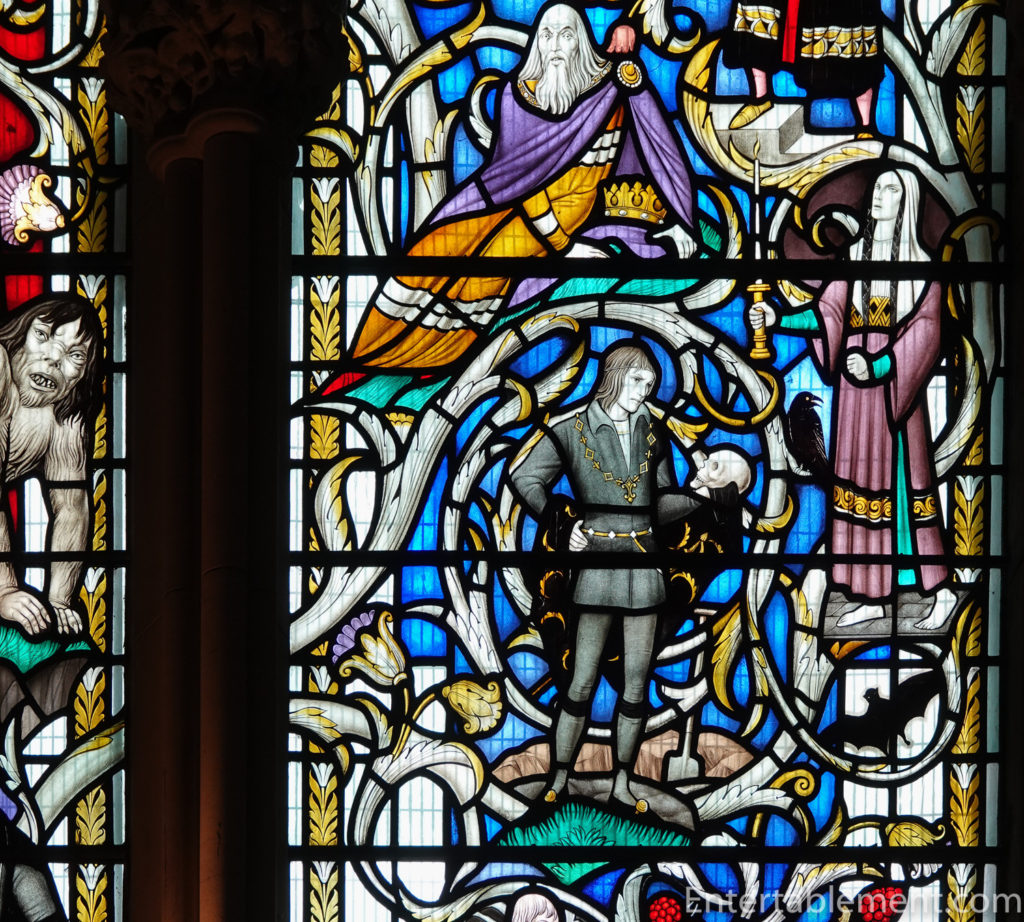

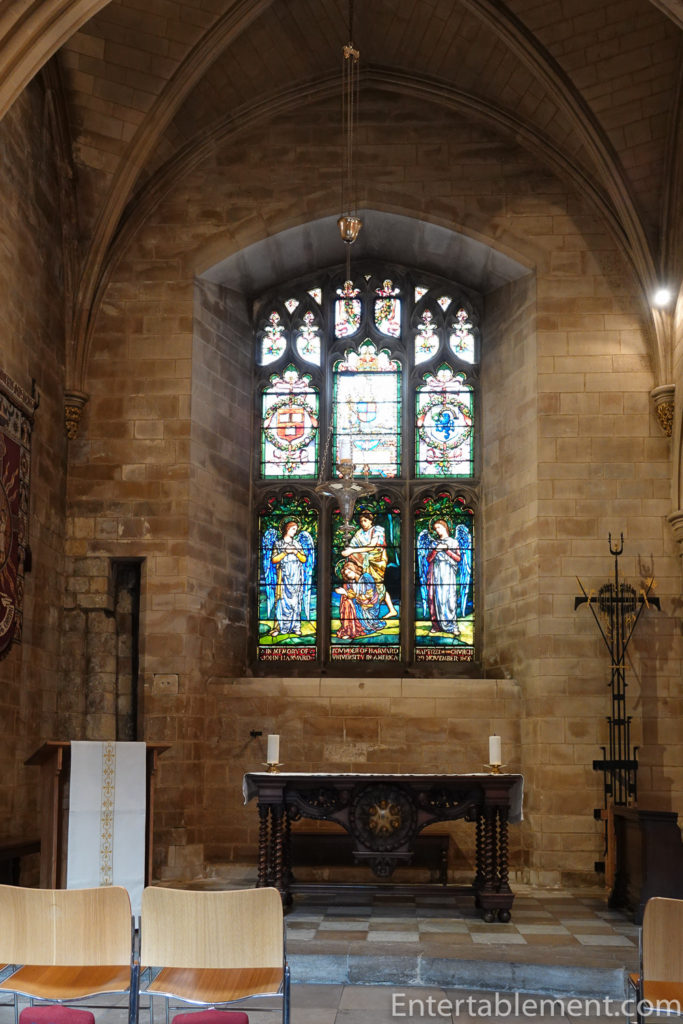
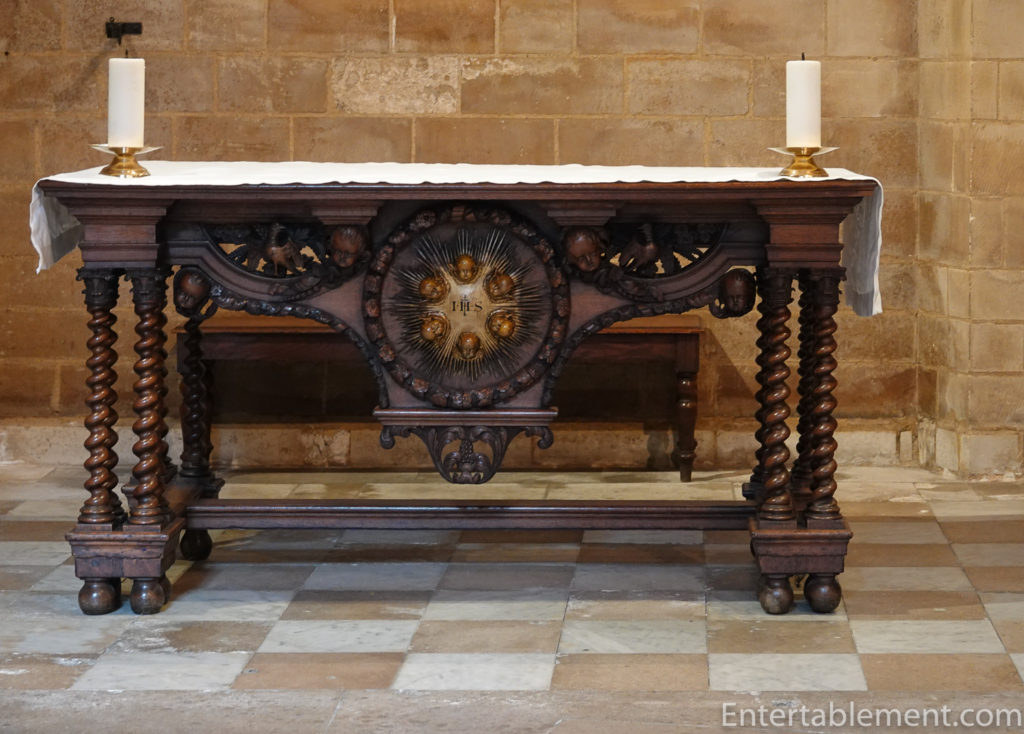
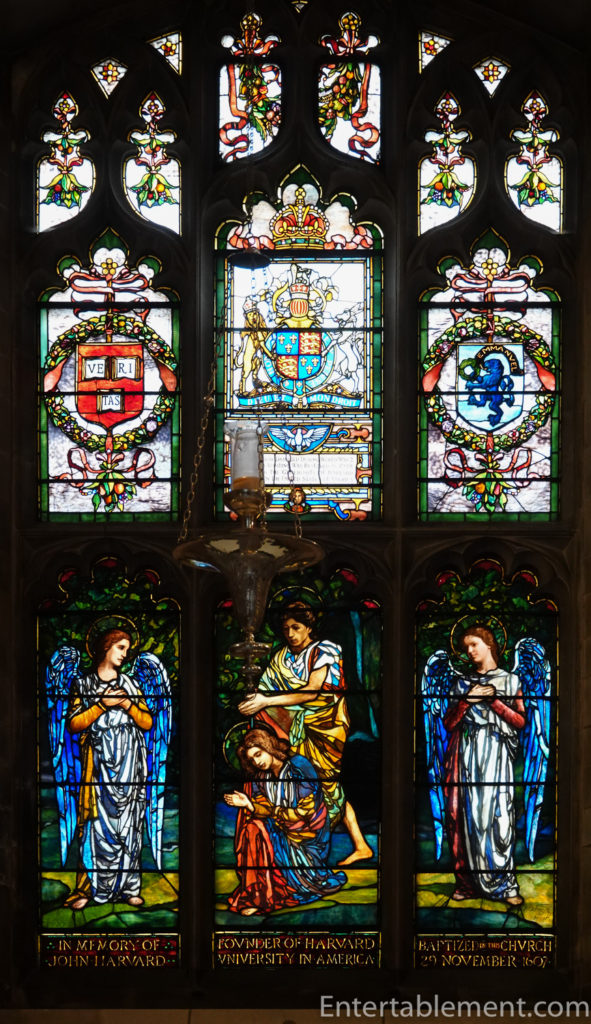
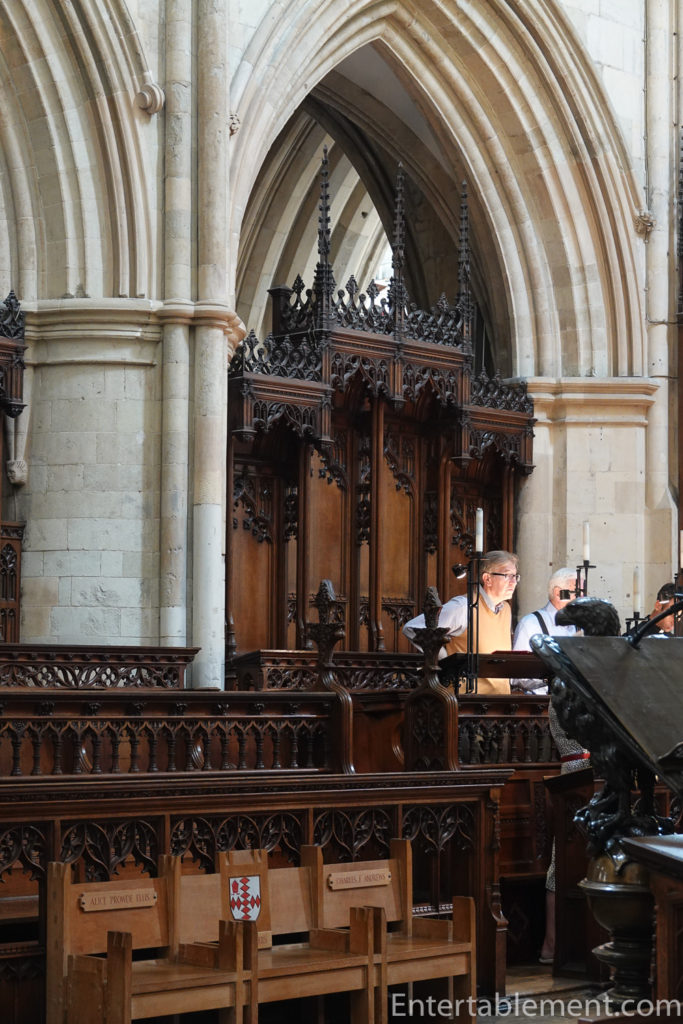

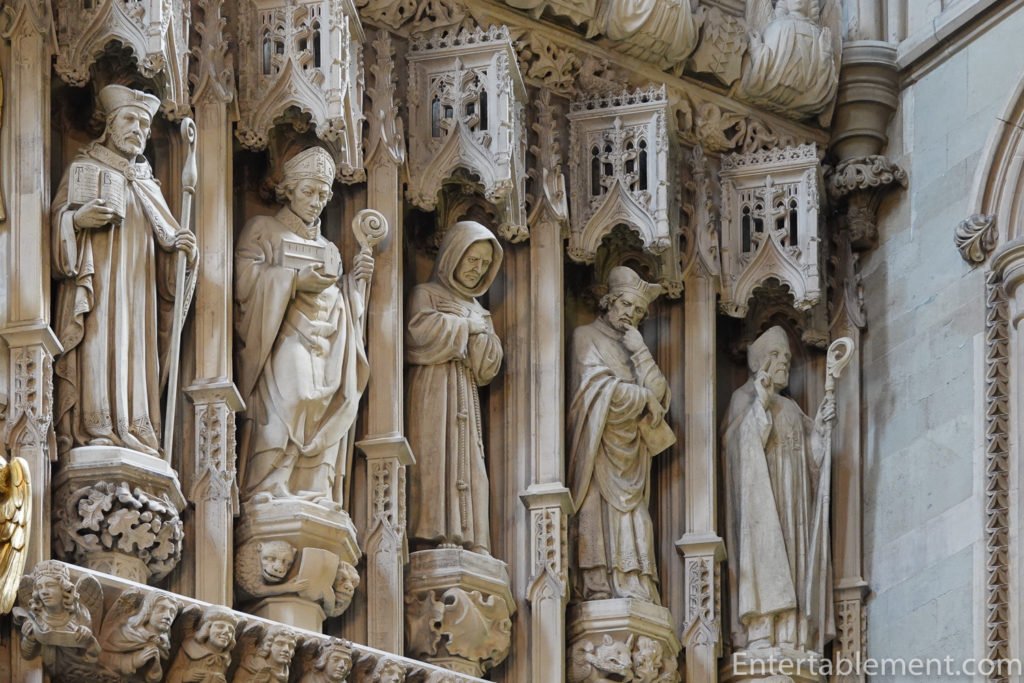
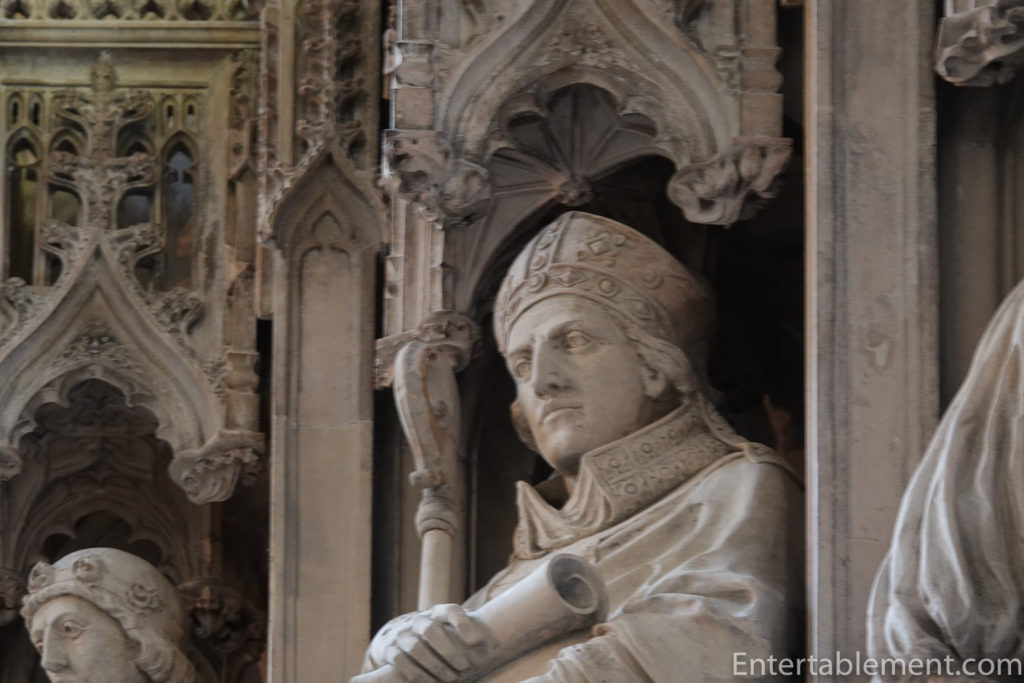

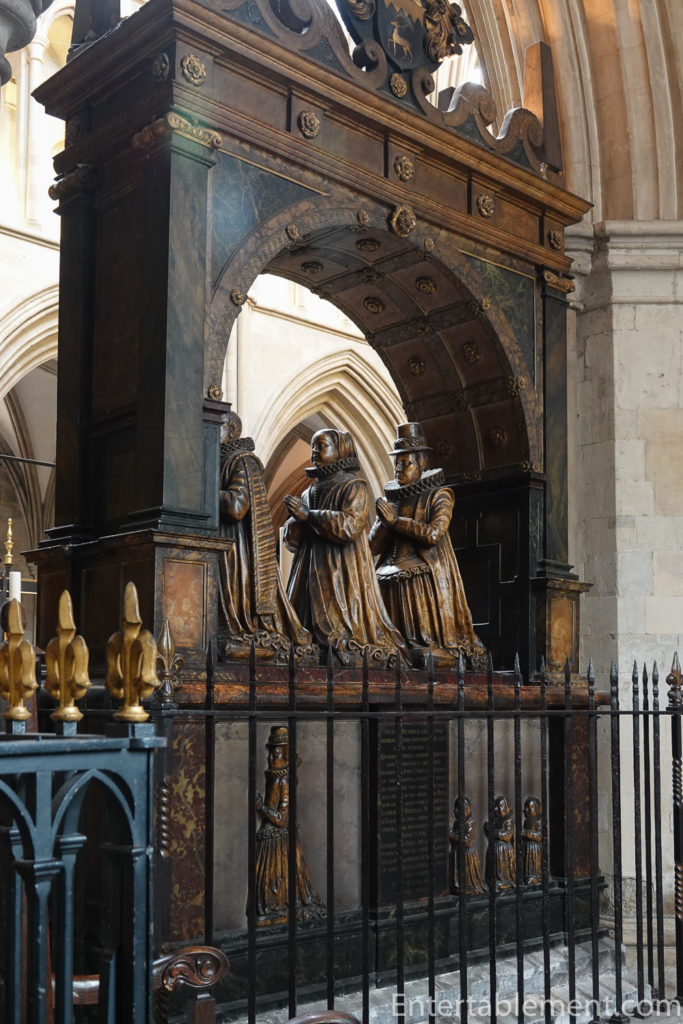



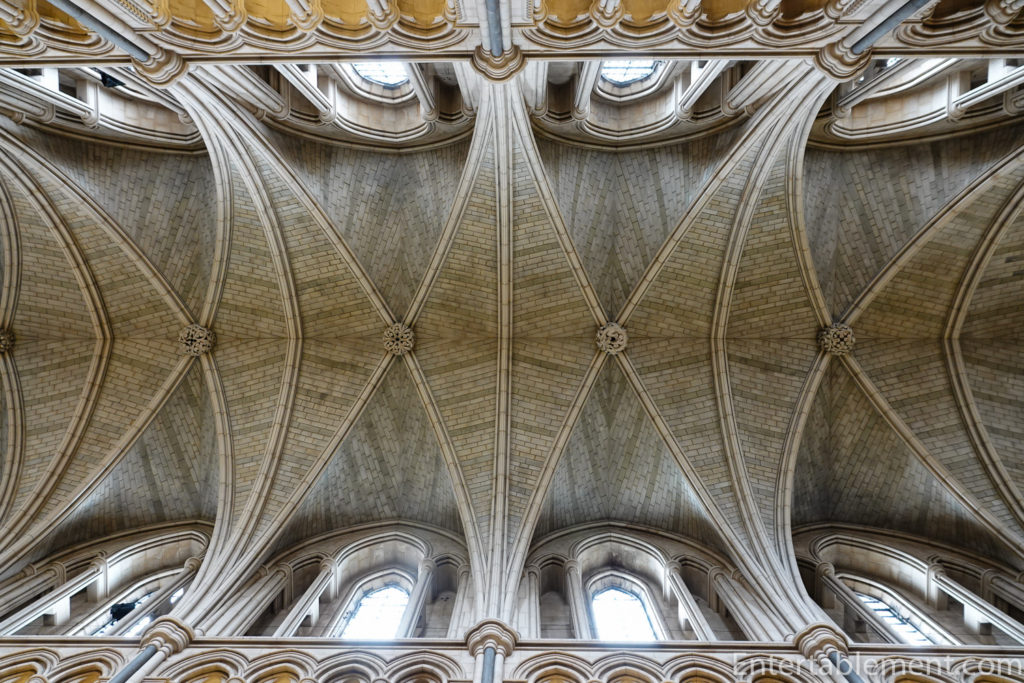

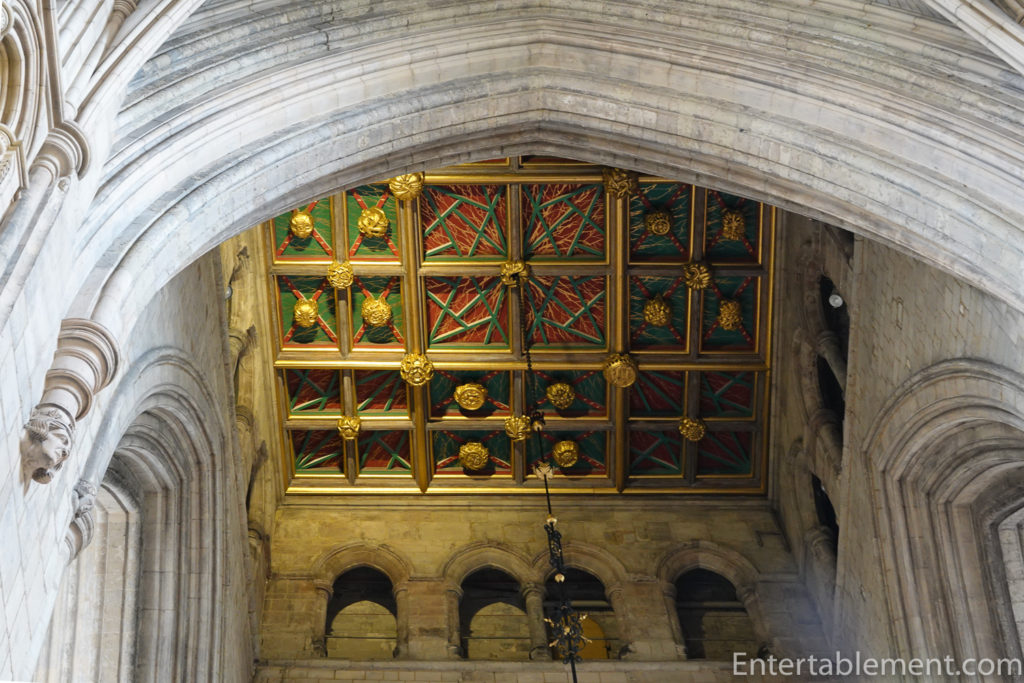




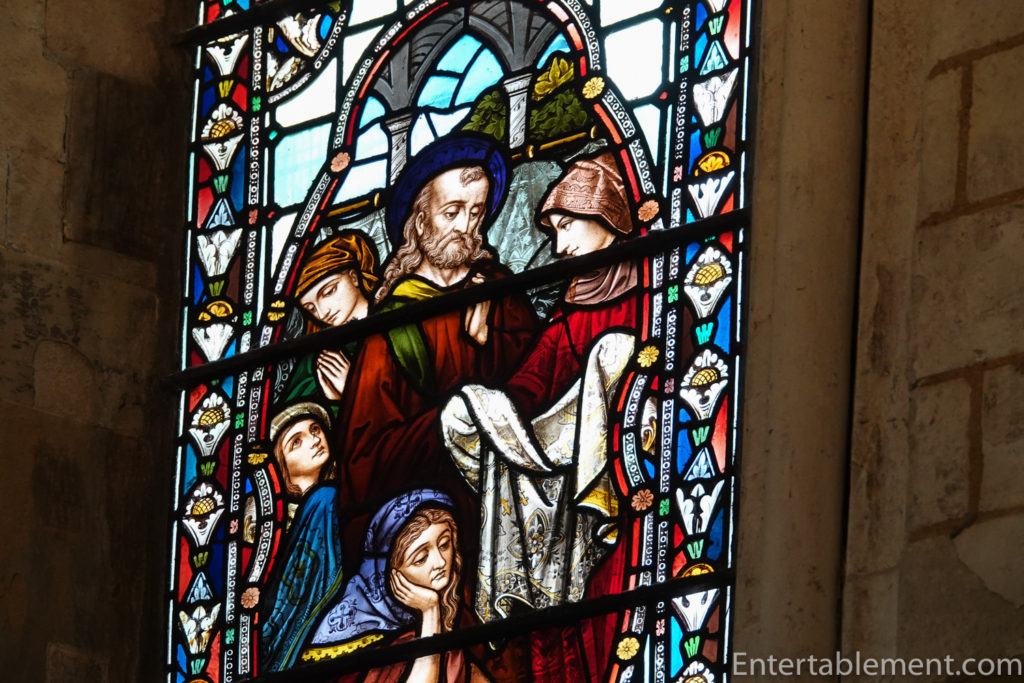




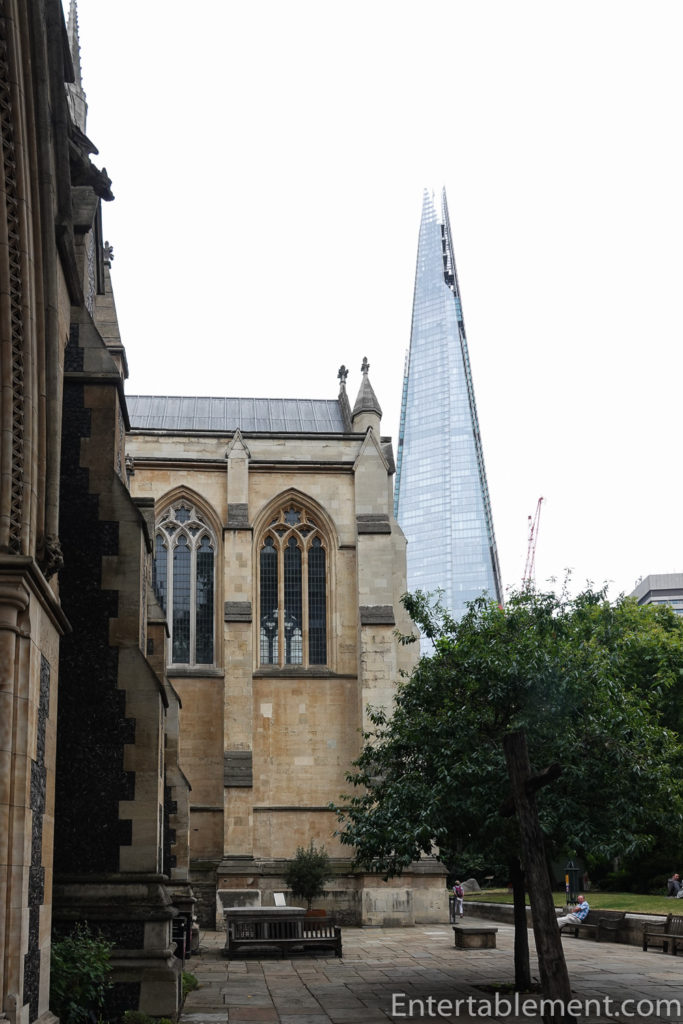




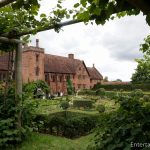


Wonderful post, Helen, full of interesting background and observation – and accompanied by your wonderful shots. You have a good eye – and must have very steady hands too! I’ve never thought about laundering ruffs before – it’s a fair point!
Thanks, Mike. I have a wonderful time taking the pictures, though the lighting can be a challenge,to say nothing of the very oddly dressed tourists! What are people thinking when they leave the house?